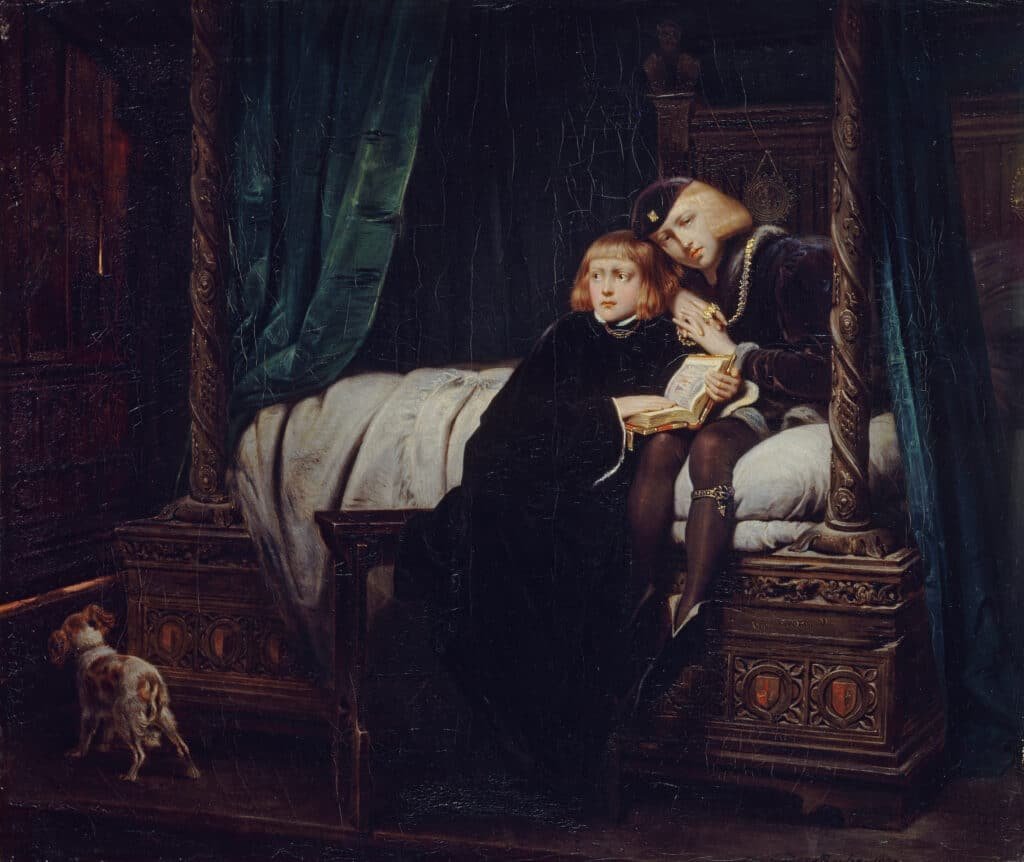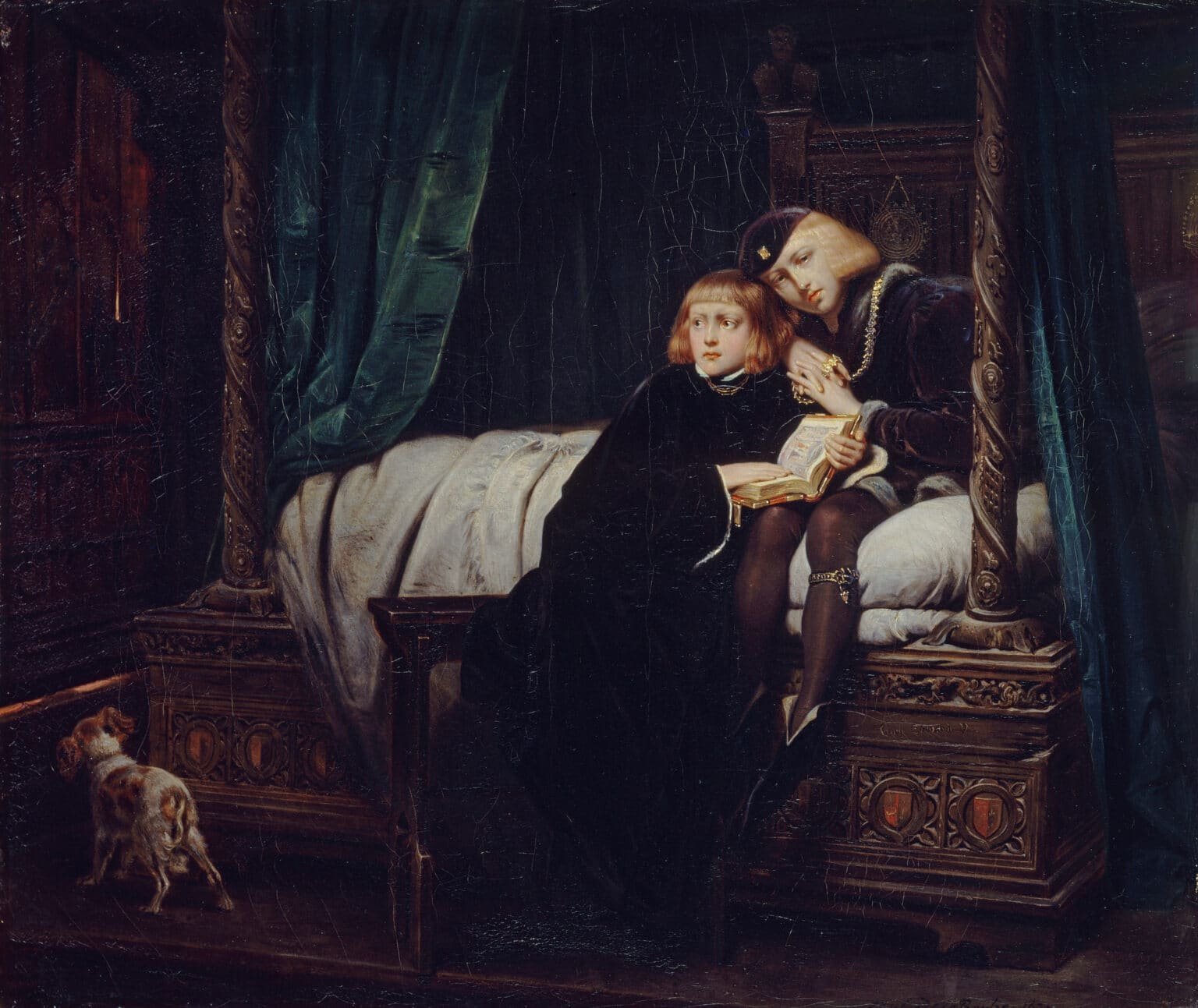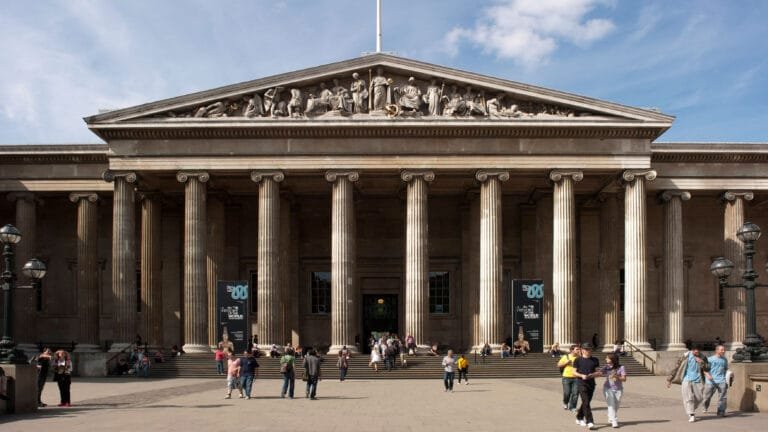
The Lost King: Imagining Richard III
THE LOST KING, a new feature film from Pathé, launches nationwide in UK cinemas this autumn. It tells the remarkable true story of how one ‘ordinary’ woman overcame every obstacle to track down the final resting place of King Richard III and give him an honourable burial. In partnership with the film, The Wallace Collection is hosting a corresponding exhibition devoted to one of British history’s most controversial sovereigns.
Coinciding with the 10th anniversary of the discovery of the remains of Richard III in Leicester, The Lost King stars Oscar nominee and Golden Globe® winning actress Sally Hawkins (Paddington, The Shape of Water) as Philippa Langley; Steve Coogan (Stan & Ollie) as her husband, John Langley; and Harry Lloyd (Game of Thrones, Jane Eyre) as Richard III. Arms and armour at the Wallace Collection play a major role in the upcoming release, with Curator Dr Tobias Capwell serving as historical advisor on the film.

For over a century, key works of art in the Wallace Collection have influenced our understanding of the life and character of King Richard III (1452-85, reigned 1483-5). Since the 19th -century, a sinister and heart-rending painting by Paul Delaroche (1797-1856), Edward V and The Duke of York in the Tower (1831), has provided the modern imagination with an indelible image of what has been judged to be Richard’s greatest crime, the alleged murder of the two ‘princes’ in the Tower of London. Weapons and armour at the Wallace Collection have been referenced by generations of artists in their interpretations of the Battle of Bosworth (22 August 1485), where Richard was famously slain. Finally, from the mid-20th -century, Wallace Collection staff have served as advisors to filmmakers placing this notorious figure on the silver screen.
In The Lost King: Imagining Richard III the Wallace Collection tells this story for the first time, displaying art and armour alongside costume created for the new film, kindly lent by Pathé.
Dr Xavier Bray, Director of the Wallace Collection says: ‘The story of how the Wallace Collection has influenced the cinematic portrayal of Richard III is a fascinating one, and we are thrilled to be telling it with this exhibition a decade after Philippa Langley’s discovery in Leicester.’

To this day, King Richard III remains one of British history’s most enigmatic figures. Since the 16th -century, he has been portrayed as the ultimate arch-villain: a usurper and child-murderer, most (in)famously in Shakespeare’s play The Tragedy of King Richard III (c. 1592-4). However, from the 17th -century, a different, more positive interpretation of Richard began to evolve, in historical studies by Sir George Buck (1619) and Horace Walpole (1768); these perspectives later inspired the founding of the Richard III Society, in 1924.
“Richard III works on the modern imagination in a unique way, attracting an unrivalled popular appeal. The extraordinary story of how Phillipa Langley discovered his grave has added another layer to his complex identity and reputation, and I am pleased that the Wallace Collection has been able to continue its own ‘relationship’ with him” says the exhibition’s curator and world-famous arms and armour expert, Dr Tobias Capwell.
Much of the fascination with Richard lies in his pivotal role in the Wars of the Roses (1455 – 1487), which culminated in the decisive Battle of Bosworth, when “King Richard, alone, was killed fighting manfully in the thickest press of his enemies”, as the contemporary Italian diplomat Polydore Vergil related.

Some of the most famous late medieval armour to survive in the world today is preserved in the Wallace Collection, and its quality, diversity and historical significance has made this museum a constant source of inspiration for authors, artists and designers, helping to shape the way we imagine ‘The Age of Chivalry’.
In about 1953, whilst in pre-production for his film adaptation of Shakespeare’s Richard III, Sir Laurence Olivier approached Sir James Mann, Director of the Wallace Collection, to provide the film’s designer, Roger Furse, with visual references and advice as historical consultant. The Wallace Collection thus became an essential reference for the design of the film. Rubber replicas of armour in the Wallace Collection were made for the actors to wear in the film’s climactic battle sequence, with Olivier himself wearing a copy of the one of the museum’s most famous fifteenth-century armours.
In 2012, the remains of Richard III were discovered in Leicester. The bones revealed that there was at least some truth to the tradition that Richard had a significant physical disability – not Kyphosis or what was historically labelled ‘hunchback’ – but rather an advanced scoliosis.
A major research project followed this historic discovery, in which the Wallace Collection was involved through the contributions of Dr Tobias Capwell.

The initial findings of the research group were presented at the Greyfriars Dig Conference held at Leicester University in 2013, and also featured in two television documentaries produced for Channel 4 (The King in the Car Park, 2013 and Richard III: The New Evidence, 2014). Dr Capwell contributed to and co-presented the second of these programmes and devised a number of practical trials and experiments intended to advance our understanding of Richard III’s physical capabilities and martial skills.
After completion of their examination, the remains of Richard III were reburied in Leicester Cathedral in 2015. Dr Capwell rode in the reburial procession as one of two armoured
horsemen accompanying the royal coffin, from the battlefield at Bosworth to its final resting place in Leicester.
The Lost King retells the remarkable story of the Greyfriars dig and the discovery of the skeleton. Written by Steve Coogan, directed by Stephen Frears, and starring Harry Lloyd as King Richard, it presents a new, non-Shakespearean image of this fascinating character. Sixty-five years after the collaboration of Laurence Olivier and James Mann, the arms and armour curator at the Wallace Collection has again acted as historical advisor, continuing the museum’s long tradition of involvement with this most captivating and mysterious of British monarchs.
Although the film is set entirely in the 21st -century, centring around amateur historian, Philippa Langley, who’s unrelenting research led to the discovery of King Richard III’s remains, its climax involves an image of the real historical Richard III at Bosworth.
Dr Capwell was asked to provide his expertise to support the creation of this new cinematic portrait of Richard III, based on his own research, to achieve a high standard of historical authenticity. Sources for this new interpretation included surviving pieces of armour of the right date and region, contemporary manuscript paintings, church monuments, and eyewitness accounts of the battle. In this way, the image of this enigmatic figure has evolved again – creating, it is hoped, the most faithful evocation of the real Richard III ever seen.
The Lost King – Imagining Richard III is a story told in three parts. The first section, The Black Legend explores the history of Richard III’s controversial reputation up to the end of the 19 th -century and features Delaroche’s Edward V and The Duke of York in the Tower (1831; Wallace Collection). The second part of the show – Richard III in the 20th Century – explores how both revisionist ideas, popularised by the Richard III Society and Shakespeare’s Black Legend each gained traction in their own ways, from the 1920s onwards. The final area – New Visions – traces the ways in which our understanding of Richard III has changed dramatically in the last 30 years, through new research, new archaeological evidence, and finally, with the production and release of The Lost King. It will feature the principal actor’s armour and costume from the film.
Dr Xavier Bray again ‘Over more than four hundred years, Richard III’s reputation has evolved from Shakespeare’s fictionalised drama to something more nuanced and fascinating and we are all really looking forward to exploring this in our new exhibition.’




